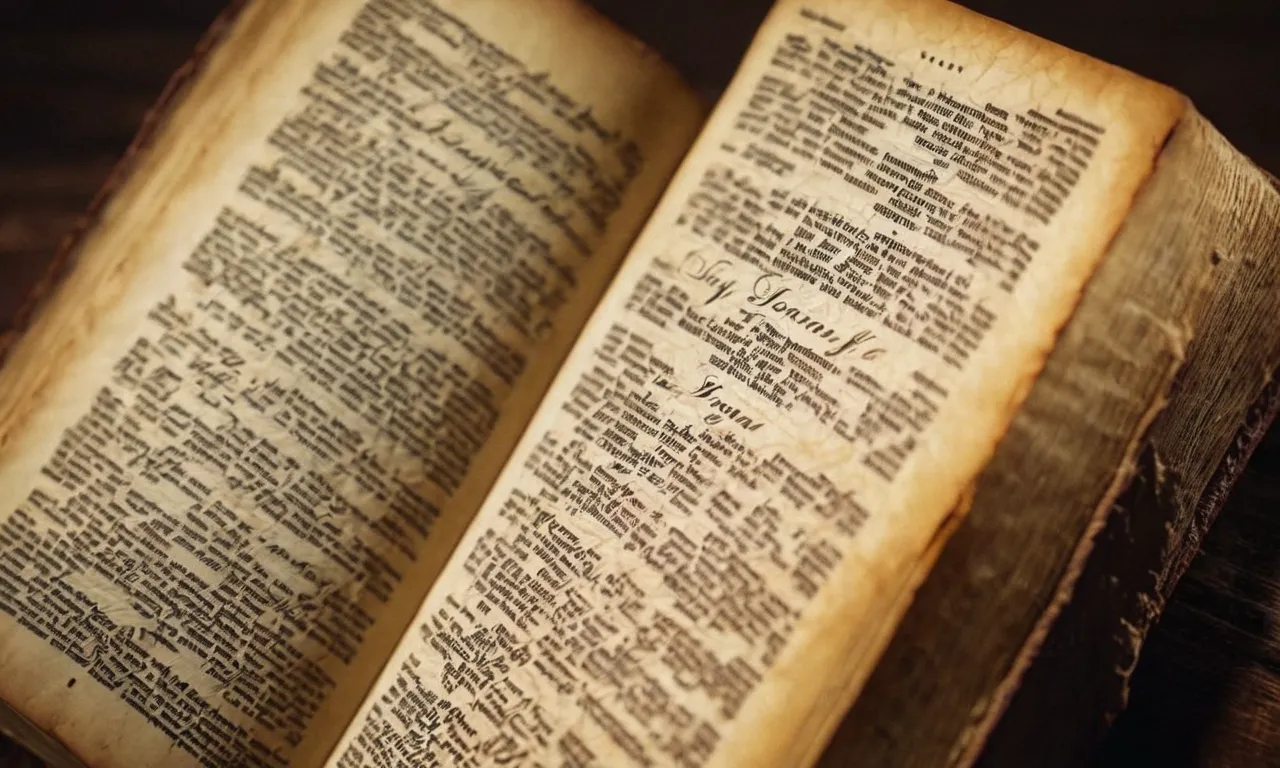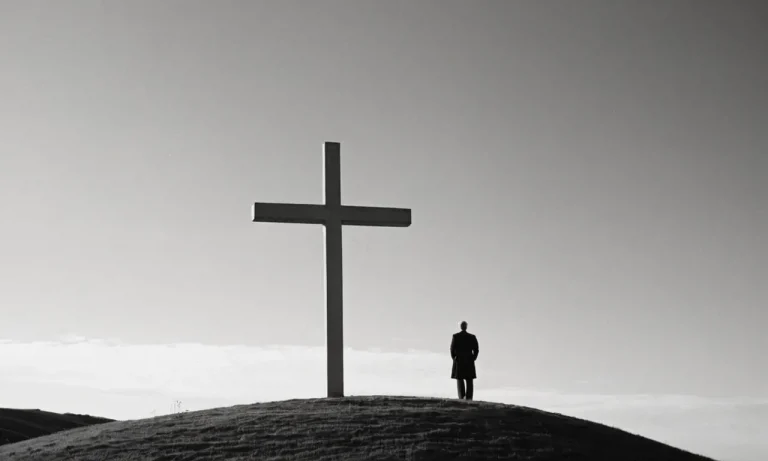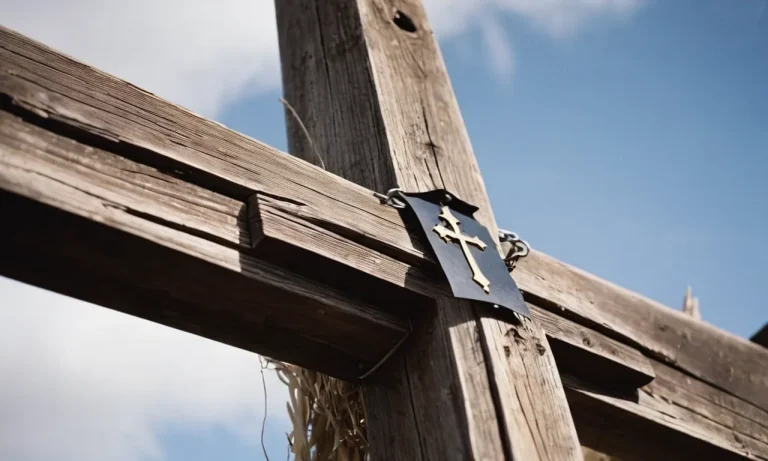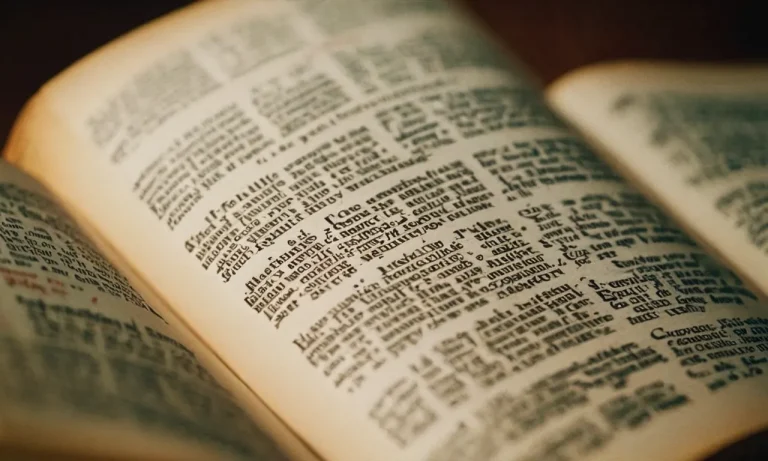Who Was Joanna In The Bible? A Complete Overview
The Bible contains many references to various women, some well-known and others more obscure. One woman who appears in the Gospel of Luke is Joanna, the wife of Chuza, Herod’s steward.
If you’re looking for a quick answer, here are the key facts about Joanna: she was one of the women who discovered Jesus’ empty tomb after his resurrection and helped spread the news of his resurrection.
She was also a follower of Jesus who contributed to supporting his ministry financially.
In this comprehensive article, we will explore who exactly Joanna was, examining the various biblical references to her life and her role as a disciple of Jesus Christ.
Joanna’s Initial Appearance in the Bible
Joanna as a Follower of Jesus
Joanna was first introduced in the Bible as one of the women who traveled with Jesus and helped provide for His ministry financially.
Specifically, Luke 8:3 states that Joanna was the wife of Chuza, Herod’s steward, indicating she was a woman of wealth and influence.
As the passage goes on to share, Joanna had been healed by Jesus, presumably of some physical or spiritual affliction, leading her to become a grateful and devoted disciple.
Based on her introduction, we can surmise some key details about Joanna’s background and character:
- She was likely well-educated and moved in elite social circles given her husband’s position.
- She generously chose to support Jesus’ ministry with her own money and influence.
- Her healing led her to be a passionate follower of Christ.
Later in Luke 24 during the resurrection account, Joanna is specifically listed among the group of women followers who went to Jesus’ tomb, once again demonstrating her faithfulness.
This indicates that despite the risks of associating herself with a controversial teacher who was crucified, Joanna remained loyal to Jesus until the very end.
Her devotion sets a powerful example of courage and commitment for all followers of Christ.
Joanna at Jesus’ Crucifixion and Burial
Joanna was one of the women present at Jesus’ crucifixion and burial. The Gospels specifically mention Joanna as being among the women who had followed Jesus in Galilee and provided for Him out of their means (Luke 8:1-3).
She likely witnessed the agony of the crucifixion along with Mary Magdalene, Mary the mother of James and Joseph, Salome, and others (Matthew 27:55-56, Mark 15:40-41).
As a faithful follower of Jesus, it must have been extremely difficult for Joanna to watch the unjust execution of her Lord.
After Jesus breathed His last breath, Joseph of Arimathea went to Pilate to request the body of Jesus so that he could provide a proper burial (Matthew 27:57-58).
Nicodemus assisted Joseph, bringing a mixture of myrrh and aloes to wrap Jesus’ body according to Jewish burial customs (John 19:39-40).
While the male disciples had fled, the women who had followed Jesus remained. They saw where Joseph and Nicodemus laid Jesus’ body in the tomb and rolled the stone over the entrance (Matthew 27:61, Mark 15:47, Luke 23:55).
The women – including Joanna – went to prepare spices and perfumes to anoint Jesus’ body properly after the Sabbath had passed (Luke 23:56). Even after His death, they remained faithful in their service to Jesus.
On the third day after the crucifixion, Mary Magdalene, Mary the mother of James, Salome, and the other women went to Jesus’ tomb at dawn, bringing the spices they had prepared.
To their shock and amazement, they found the stone rolled away and the tomb empty.
Two angels appeared and announced that Jesus had risen from the dead, just as He said He would (Matthew 28:1-6, Mark 16:1-6, Luke 24:1-8).
The women hurried to tell the disciples the astonishing news. While Joanna is not specifically named in the resurrection accounts, it is likely she was among this group of women who were the first witnesses of the empty tomb and the resurrection.

Joanna Discovers the Empty Tomb
Joanna and the Other Women at the Tomb
According to the Gospel accounts, Mary Magdalene, Mary the mother of James, Salome, and Joanna went to Jesus’ tomb early Sunday morning to anoint his body with spices. They were unaware that Jesus had risen from the dead.
As they approached the tomb, they wondered how they would roll away the heavy stone that sealed the entrance. Much to their surprise, the stone had already been rolled away!
Joanna joined the other women in entering the tomb, only to find it empty except for the burial cloths.
The Gospel of Luke states that the women were perplexed when they did not find Jesus’ body. While they stood wondering what had happened, two men in dazzling apparel suddenly appeared.
The angels proclaimed that Jesus had risen from the dead, just as he had predicted.
Joanna Tells the Disciples about the Resurrection
After encountering the angels at the empty tomb, Joanna and the other women hurried to tell the disciples the amazing news.
The Gospel accounts describe how the women told the eleven disciples and the other followers about the empty tomb and the angels’ message.
However, the disciples initially dismissed the women’s story as an “idle tale” and did not believe them (Luke 24:11).
Yet Joanna and the women persisted in sharing what they had witnessed. According to Luke 24:9, Joanna was one of the women who reported the resurrection to the apostles.
Joanna told the disciples how they had gone to the tomb early that morning, found the stone rolled away, saw angels, and heard them proclaim Jesus was alive.
Her testimony as one of the first witnesses of the empty tomb and resurrection played a key role in the early Christian church.
Joanna’s Role and Significance as a Disciple
Joanna as a Witness to Key Events
As one of the women who followed Jesus and his disciples, Joanna witnessed some of the most pivotal events of Jesus’s ministry firsthand.
She was likely present at Jesus’s triumphal entry into Jerusalem, his last supper with the disciples, his trial and crucifixion, and even his resurrection.
The Gospel of Luke specifically names Joanna as one of the women who discovered Jesus’s empty tomb on Easter morning (Luke 24:10).
Imagine her utter shock and wonder upon learning of Christ’s resurrection – this miraculous event confirmed that Jesus truly was the Son of God.
As one of the first eyewitnesses to the empty tomb, Joanna helped validate and spread the incredible news that Jesus had risen from the dead.
In addition, Joanna probably observed many of Jesus’s teachings, sermons, healings, and other miraculous signs. She saw how he treated women, sinners, and outcasts with love and compassion. These remarkable experiences undoubtedly strengthened her burgeoning faith.
Joanna’s Faithfulness and Service
The Gospel writers portray Joanna as a faithful follower who supported Jesus’s work through her own means. Luke 8:2-3 states that Joanna helped provide for Jesus and the disciples out of her own resources.
Her financial stability gave her the capacity to contribute to their itinerant ministry.
Not only did Joanna offer material support, but she also served Jesus in more personal ways. She likely helped with cooking meals, washing clothes, and extending hospitality at various points throughout their travels in Galilee and Judea.
Furthermore, Joanna showed unwavering loyalty even after Jesus’s death by arriving at his tomb to anoint his body with spices.
At this low point when Jesus’s male disciples had abandoned and betrayed him, the women closest to Jesus stayed by his side.
They displayed true devotion regardless of the cost. Their steadfast courage in the face of danger reveals Joanna’s profound faith.
According to church tradition, Joanna later joined the early Christian community that formed after Pentecost. She possibly worked alongside other renowned women like Mary Magdalene and Susanna in proclaiming the gospel message throughout the region.
If accurate, these stories demonstrate Joanna’s ongoing influence and leadership in the early church.
Conclusion
In conclusion, while Joanna’s appearances in the Bible are relatively brief, she clearly played an important role as one of Jesus’ faithful followers.
As one of the women present at the crucifixion and resurrection, she witnessed pivotal moments in Christ’s ministry.
Her service helping provide for Jesus’ needs exemplified discipleship in action. Joanna stands out as a dedicated supporter of Christ and an influential woman in the early church.








